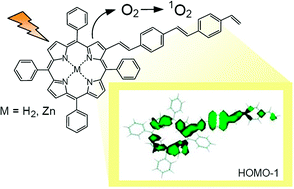Extending the porphyrin core: synthesis and photophysical characterization of porphyrins with π-conjugated β-substituents
Abstract
New free-base and Zn-

* Corresponding authors
a Istituto per la Sintesi Organica e la Fotoreattività (ISOF), CNR, Via P. Gobetti 101, Bologna, Italy
b Nanomaterials Research Centre, Massey University, Palmerston North, Private Bag, New Zealand
c MacDiarmid Institute for Advanced Materials and Nanotechnology, Massey University, Palmerston North, Private Bag, New Zealand
New free-base and Zn-

 Please wait while we load your content...
Something went wrong. Try again?
Please wait while we load your content...
Something went wrong. Try again?
B. Ventura, L. Flamigni, G. Marconi, F. Lodato and D. L. Officer, New J. Chem., 2008, 32, 166 DOI: 10.1039/B707505G
To request permission to reproduce material from this article, please go to the Copyright Clearance Center request page.
If you are an author contributing to an RSC publication, you do not need to request permission provided correct acknowledgement is given.
If you are the author of this article, you do not need to request permission to reproduce figures and diagrams provided correct acknowledgement is given. If you want to reproduce the whole article in a third-party publication (excluding your thesis/dissertation for which permission is not required) please go to the Copyright Clearance Center request page.
Read more about how to correctly acknowledge RSC content.
 Fetching data from CrossRef.
Fetching data from CrossRef.
This may take some time to load.
Loading related content
